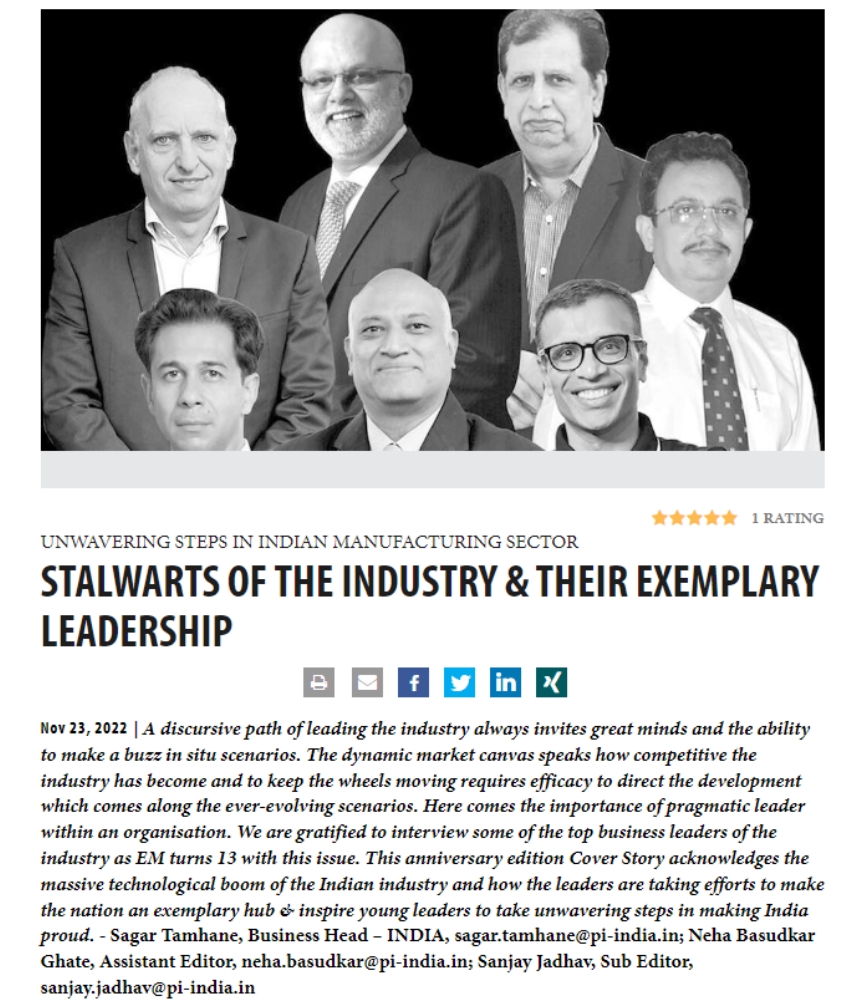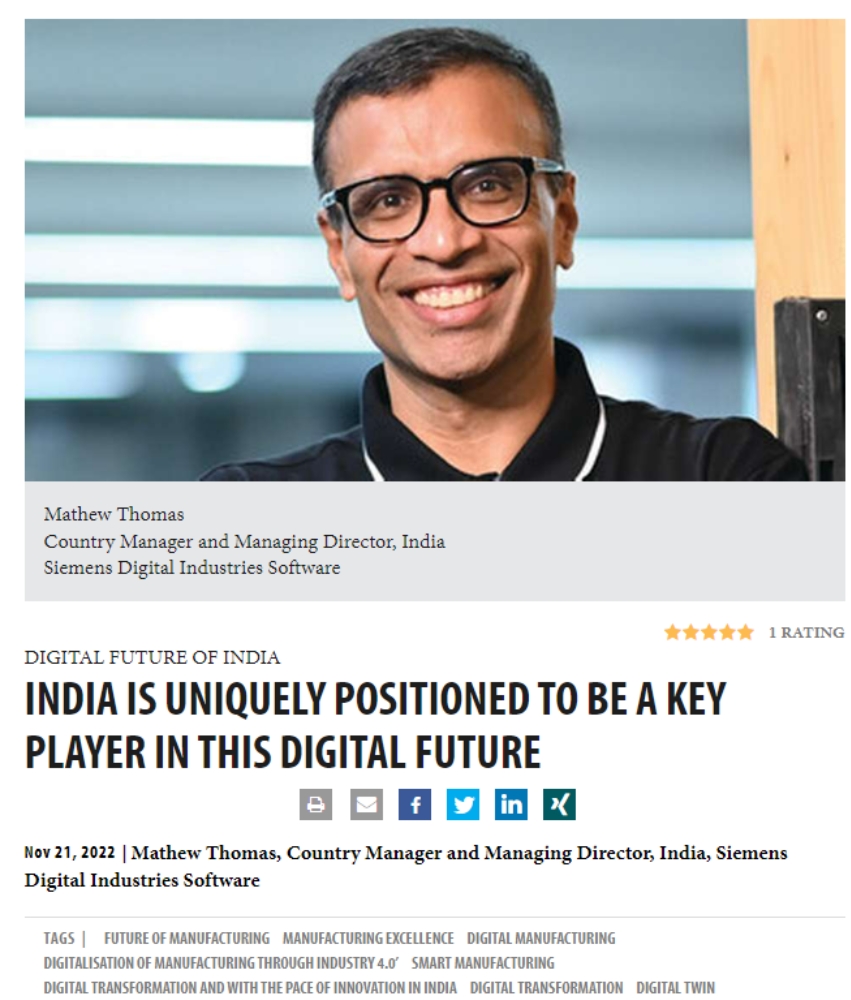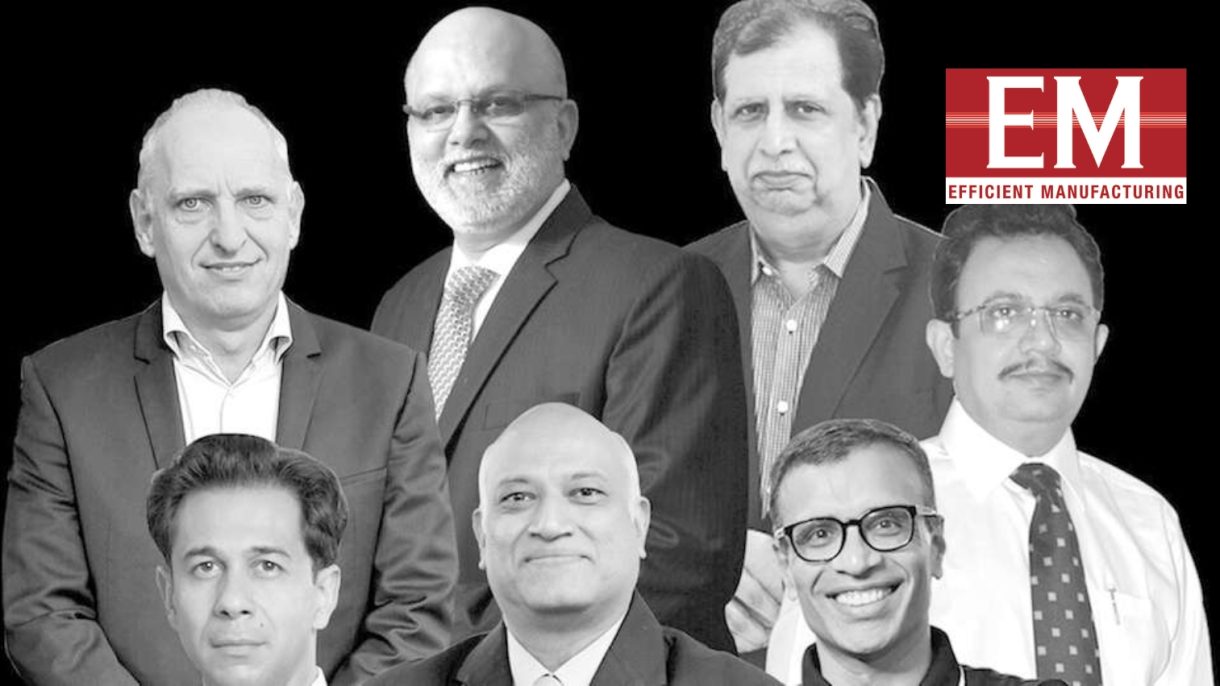

With a vast footprint in the digital industry software space worldwide, how eminent has the Indian market been for business, delivering future technologies?
India has always been an important part of our software business. Over the years, we have achieved considerable success in building a strong community of customers in India, and our business here continues to see healthy growth with both large enterprises and SMBs embracing our Xcelerator portfolio to enable their digital transformation efforts. But that’s not all. India is also a key source of intellectual capital for us, with one of our largest product development centres located here.
Companies today are under increasing pressure to follow sustainable practises that come at a cost and impact profitability, what are your views on the Smart Manufacturing Revolution and how do you think your R&D contributes to this?
Sustainability is the heart of our business and the engine that drives it. This is why we’ve developed a sustainability framework called DEGREE (Decarbonisation, Ethics, Governance, Resource Efficiency, Equity, and Employability), which sets clear and measurable ambitions. We issue an annual sustainability report outlining our progress toward stated goals. The same philosophy extends to the solutions that we provide to our customers that can help them improve their quality of life for their customers while using fewer resources. Smart manufacturing will play a key role in this initiative. By leveraging executable digital twins across their product lifecycle, manufacturers can achieve their sustainability goals without compromising on either quality or profitability, finding the right balance and a wide understanding across the entire value chain from the very beginning, providing an accurate picture of its total environmental impact, including that of suppliers, distributors, and logistics operations.
What are the significant developments the company has made when it comes to digitalisation? Can you share some recent success stories regarding how it has been vital for the industry to adopt it?
Our Xcelerator portfolio ignites digital transformation, empowering companies of all sizes to embrace complexity and leverage it to enhance productivity and gain a competitive advantage. One of our customers in India, a leading automotive OEM, recently published a success story that showed how they were able to increase throughput in their paint shop by 15% by implementing our IoT solution. Another customer, a small tool manufacturer, achieved a 50% reduction in product development time by implementing a product development system, while a line builder was able to reduce commissioning time on average by 70% through a virtual commissioning environment.
What are the three takeaways you would like to share with Indian leaders as they adopt digitalisation and automation to help accelerate the industrial digital transformation?
Firstly, digital transformation is a multi-year journey, not a short-term fix. It needs to be driven from the top of the organisation. Secondly, it is important for leaders to build an overall digital transformation strategy before getting into implementation. We have a framework of digital threads by an industry that can help guide and inform leaders as they build out a digital transformation roadmap in line with their strategic priorities. Thirdly, it is important to work with a trusted technology partner that can provide powerful tools that enable the creation of a comprehensive digital twin, while providing a flexible, adaptable, and open system. Given the growing maturity of cloud-based software deployments and the flexibility that this creates for companies, leaders should seriously consider cloud deployment.
India is evolving as a global manufacturing hub wherein industrial software has played a crucial role. How do you look at it, and how is the company strategizing to embrace complexity and leverage it to enhance productivity and gain a competitive advantage?
The industrial world is in the midst of transformation, and so is India. It is adapting fast to this change. Today‘s products are becoming smarter, and more personalised. New insights, new opportunities, and new levels of automation at every point of the value chain. These aren‘t the promises of tomorrow, they‘re the opportunities of today. Siemens Digital Industries Software brings the latest in the world to India, blurring boundaries between industry domains by integrating the virtual and physical, hardware and software, design, and manufacturing worlds while being personal and highly adaptable, which organisations need. With an open, modern, and flexible ecosystem, organisations can predict and adapt to future needs, giving them the ability to meet rapidly changing consumer preferences and hence gain an advantage in the globally competitive landscape.
What is the piece of advice you would want to give to the new-age industry leaders in India?
Today’s products continue to grow in complexity, requiring the integration of multiple domains, including mechanical, electrical, electronic, and software design. This trend is set to continue as demands for integrated AI and vision systems, machine connectivity, and remote monitoring increase. Considering the simultaneous pressure to shorten delivery times, manufacturers face a huge challenge.
To address this challenge, the most progressive companies are increasing their adoption of digital technology to accelerate innovation and optimise existing products. The recently produced 2022 Digital Twin Study by Lifecycle Insights found that the most progressive companies will continue to invest in technology, increasing the gap with those who lag, leaving them subject to a harder competitive outlook and potential losses in time to market, and ultimately lost business.
Could you share your thoughts on what lies ahead for industrial software and how it will play a critical role in assisting India in establishing a global footprint in the digital ecosystem?
The digital future of the industry is no longer some far-flung promise but is here today. India is uniquely positioned to be a key player in this digital future, given our young and technologically savvy workforce. However, long-term success requires a strong collaboration between key stakeholders like the government, industry, and academia to create a stable policy environment, encourage entrepreneurship and innovation, and provide skill enhancement opportunities to young Indians.
Also, manufacturers that embrace advanced technologies are able to be more agile and resilient and are more successful in managing complexity, changes, and disruption.


